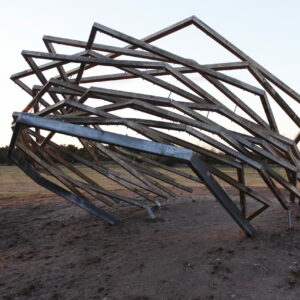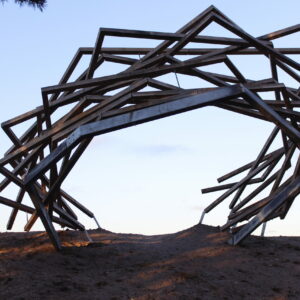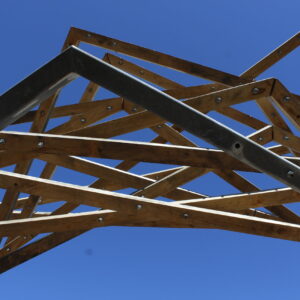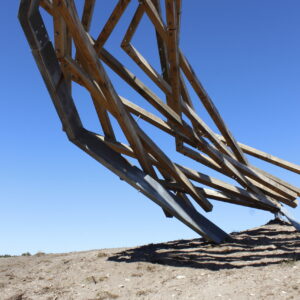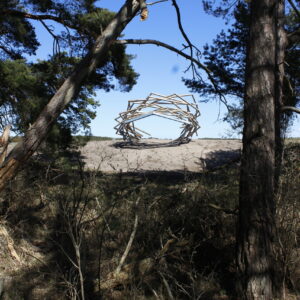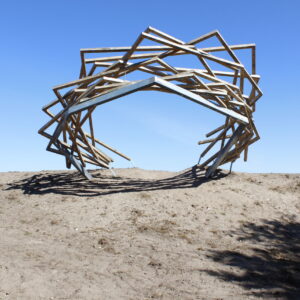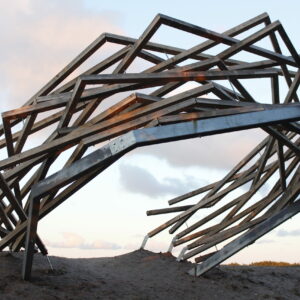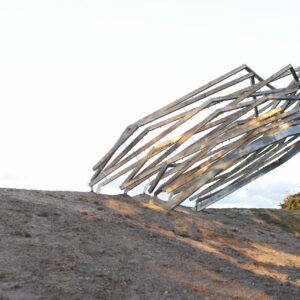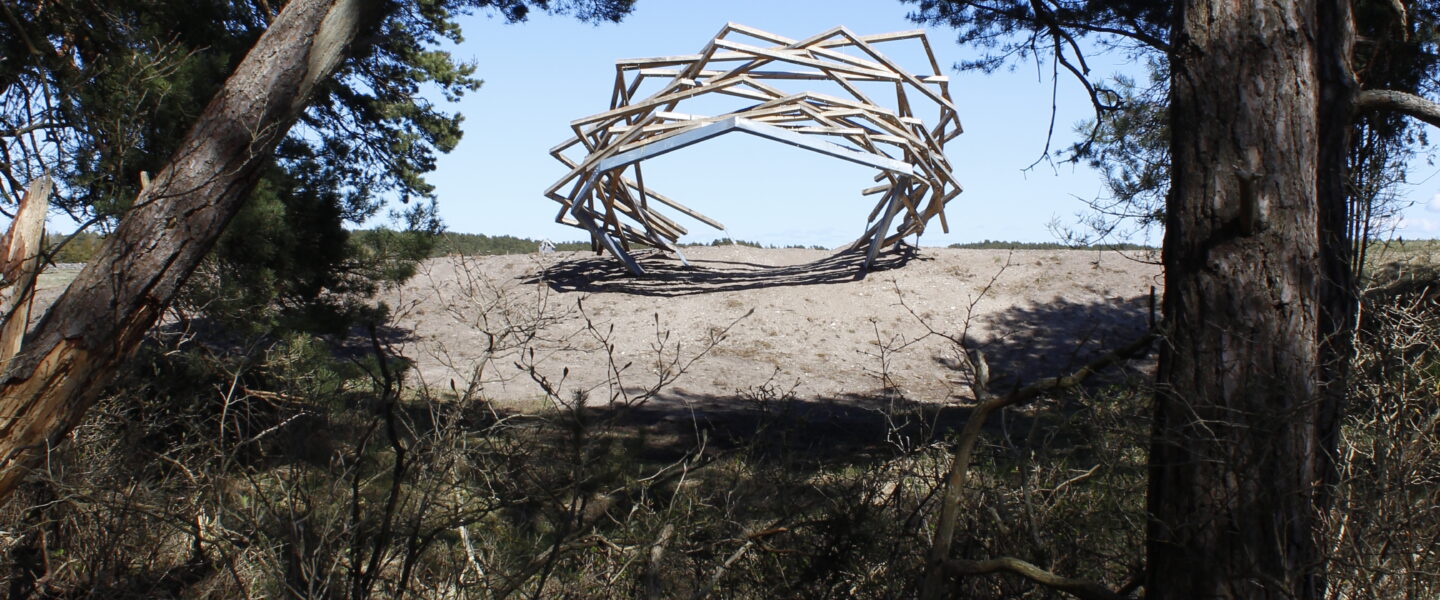
During the last year, the students of the Department of Interior Architecture of EKA have worked, tutored by Ardo Hiiuväin, an interior architect from Vilsandi, and several other supervisors to give the people of Vilsandi Island a funeral urn burial place or columbarium right there on the island. Now the columbarium and the landmark are finally ready.
A dozen years ago, the people of Vilsandi Island stated that the small island cemetery should be reopened for burial. The islanders have been buried in the neighbouring Saaremaa Island for years, but according to the locals, they still miss the soil of their home island. The students of interior architecture visited Vilsandi for the first time at the beginning of their first academic year, and decided to work on providing a spatial solution to the problem.
In preparing the project, the students got well acquainted with different funeral practices, listening to the lecture on funerals and customs by the Archbishop of EELK Urmas Viilma and the lecture on life and death by David Vseviov, Professor Emeritus of EKA. Architect Tomomi Hayashi spoke about the burial customs and traditions of oriental cultures, while architect Sille Pihlak talked about valuing wood, because the team definitely wanted to use wood as a material. Together with the representatives of the Vilsandi community, the Island Elder Neeme Rand and the Keeper of the Island Avo Piisk, a work entitled ‘PESA’ (nest in Estonian) was selected from among the students’ various ideas, and it has now finally been completed.
According to Trine Tõniste, the author of the idea of a nest-shaped columbarium, the motif is inspired by the abundant seabirds of Vilsandi – the Vaika Bird Sanctuary was established already in 1910 near Vilsandi – the oldest nature reserve in the Baltics, the predecessor of today’s Vilsandi National Park.
According to Professor Tüüne-Kristin Vaikla, Head of the Department of Interior Architecture at EKA, the awareness and treatment of birth and death as part of an equal life is a very personal and at the same time frightening issue, the significance of which is hard to overstate. “However, the students’ newly completed project sits well in the nature of Vilsandi and carries in it great subconscious lightness and beauty. Very proud!”
According to Ardo Hiiuväin, who tutored the students throughout the project, the end result is something to be proud of indeed: “The topic we were dealing with is not an everyday one, but at the same time it offered the students the opportunity to look deeper into themselves for a while and keep a little inner reflection on where they want to leave the world.”
There are currently only five columbariums in Estonia; PESA will be the sixth. Two are located in the Tallinn Forest Cemetery, one in Tartu, one in Tori Church in Pärnu County and one at the Jõhvi Funeral House. The largest columbarium with 253 urn chambers is located in the basement of Tartu Paulus Church, and the columbarium of Tori Church is intended only for officers. The name ‘columbarium’ comes from a pigeon – columba is the Latin name for a pigeon, and a similar form of multi-chamber facility has been used to keep the pigeons.
For several years in a row, studio “Small Building” has been on the agenda of the first-year students of the Department of Interior Architecture of EKA. Previously, the Pähni forest megaphoness, the observation tower of the Tuhu bog, the shelters of the Noku campfire site and the installation investigating the bending point of wood on the shore of Pedeli Valga have been completed, among others. These are all human-scale objects in which students go through the stages of creating a space, from the conception of the initial task to the construction practice. PESA is the latest addition.
Tutors: Ardo Hiiuväin, Tõnu Kalpus, Ahti Grünberg
Engineer: Tõnis Agasild
Commissioned by: MTÜ Vilsandi Külaselts
Students: Harold Kiisler, Auli Vaino, Laura Pormeister, Hanna Loora Arro, Roger Matthias Laas, Elisabeth Perk, Aurelia Minev, Markus Sirg, Karl August Johannes Pedoson, Hanna Maria Kruusmaa, Trine Tõniste

